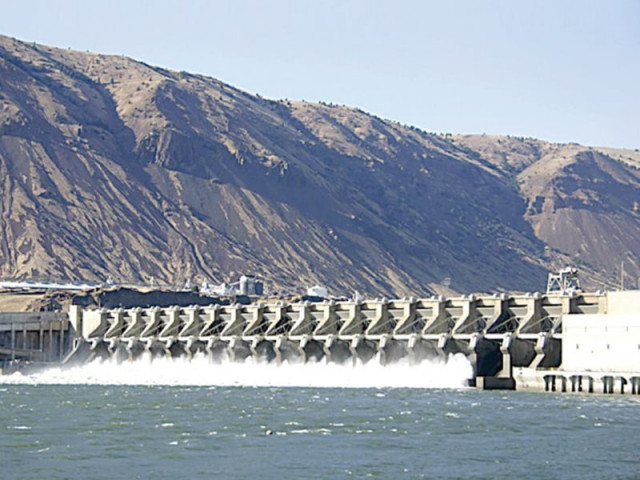Energy solutions: Hydroelectric power – the way forward
Plentiful and affordable energy only possible through hydroelectric power.

The new government has announced that the Diamer-Bhasha Project has the highest priority. Efforts should be made to start the construction of Bhasha and almost simultaneously Dasu 4320MW. Bhasha would also increase the life of Tarbela by 30-40 years. PHOTO: FILE
It really would be a cliché to say that the country requires more electrical power. For a long time, authorities have complained of shortage — the issue dragging on such that we feel that nothing can be done about it.
But there is a solution. To produce electricity, coal, wind, solar power can all be used. But given the magnitude of our requirements there is only one source — our hydroelectric potential of over 60,000 megawatts. Only by recognising this and pursuing the project, can there be abundant and affordable electricity.
As a member of the Planning Commission‘s Energy Working Group in 1990-1991, I identified 42 projects to produce over 40,000MW. I kept on striving for these hydroelectric projects at various seminars and conferences, and these were incorporated into a programme in the Water and Power Development Authority’s (Wapda) ‘Vision 2025’.
Wapda was established for the integrated and multi-purpose development of the water-power resource. Under Ghulam Faruque, I belonged to a small group of engineers that formed the nucleus of the organisation in 1958. It soon became Pakistan’s largest development organisation with world-class engineers. Projects were completed on time, within stipulated periods.
Role of hydroelectric resources
As early as 1975, it was realised that economic development needed to be accelerated with hydel development. In 1975, a national conference was organised in Lahore. This was chaired by the then Minister of Water and Power Yusaf Khattak with Wapda and concerned federal secretaries along with 200 engineers taking part.
In my keynote address, I emphasised on two issues. First, that since Tarbela was near completion, we should immediately undertake the process of constructing two major hydroelectric projects on the Indus and to take up the installed capacity to 12,000MW by 1982. Second was that the selection of these two projects should be undertaken through a ranking study by a reputable international consulting engineering organisation.
My paper was accepted as the conference recommendation and the ranking study was finally completed in 1984, by the reputable Montreal Engineering Company. They ranked nine projects on the Indus, prepared and completed a detailed feasibility study of the top-ranked Bhasha Dam and hydroelectric project in 1984.
Since they had not ranked Kalabagh, the Kalabagh lobby practically blacklisted them. However, a separate consulting engineering firm prepared and completed the feasibility study on Kalabagh, also in 1984.
Since then, we could have built the three non-controversial mega projects, Bhasha, Dasu and Bunji to add 16,000MW power. But by stressing only on Kalabagh, not allowing construction of the other non-controversial mega projects, and impeding hydroelectric development, we have been faced with an inadequate power shortage, as well as over dependence on oil-powered and inefficient thermal power IPP’s coupled with their unaffordable cost.
After many years of delay, work started on filling the gaps in Bhasha’s feasibility study. By 2005, the design and engineering documents were ready but to please the Kalabagh lobby, Bhasha was delayed.
No further feasibility of the Bhasha is needed now and we must not fall into the trap of asking for more funds.
The way forward
The new government has announced that the Diamer-Bhasha Project has the highest priority. Efforts should be made to start the construction of Bhasha and almost simultaneously Dasu 4320MW. Bhasha would also increase the life of Tarbela by 30-40 years.
We are not in a position to add 23,837MW by 2015 but hydropower can be our salvation in the power sector — the only indigenous and abundant resource that can make electricity affordable and cheap enough to cost around Rs2 per unit.
Electricity from coal is Rs10, furnace oil over Rs16, gas over Rs4 and wind about Rs14 per 30,000MW in 10 years. It is imperative that we proceed and accelerate through hydel projects and this can be done if the government produces the will and commitment to pursue them.
The writer is a former chairman of the Planning Commission Working Group on Hydropower and Alternate Energy
Published in The Express Tribune, December 2nd, 2013.
Like Business on Facebook, follow @TribuneBiz on Twitter to stay informed and join in the conversation.



















COMMENTS
Comments are moderated and generally will be posted if they are on-topic and not abusive.
For more information, please see our Comments FAQ